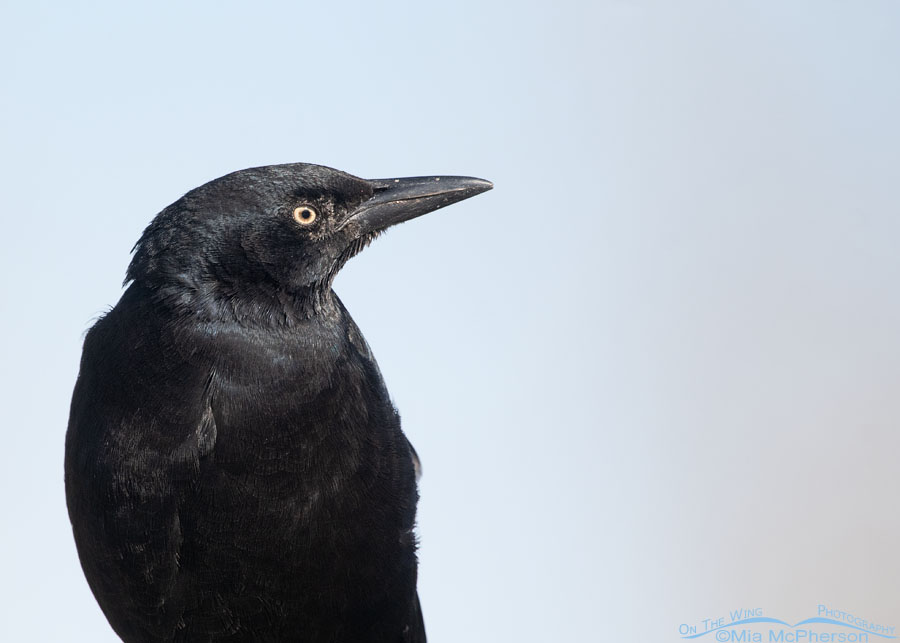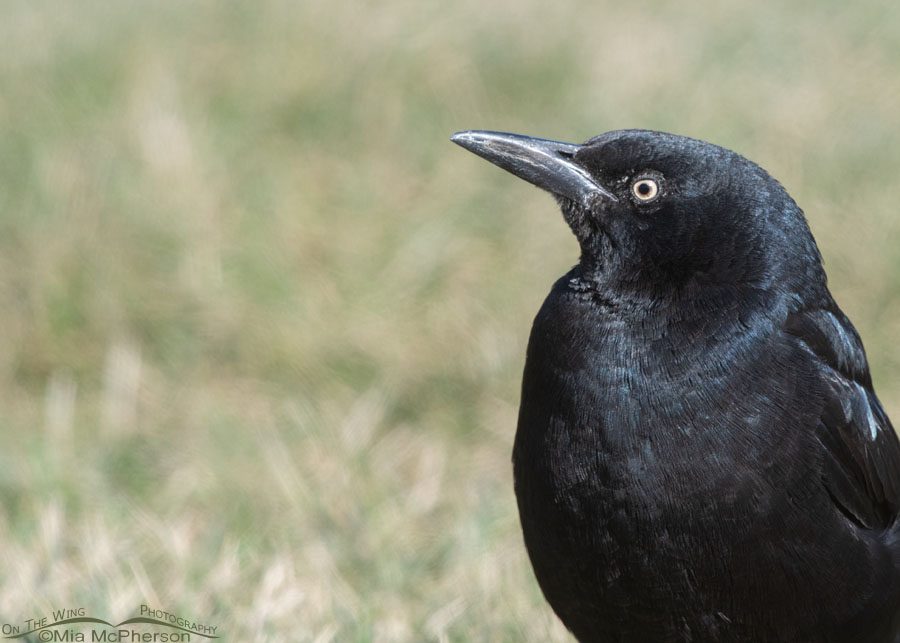 Male Great-tailed Grackle portrait with sky in the background – Nikon D500, f7.1, 1/1600, ISO 500, +0.7 EV, Nikkor 500mm VR with 1.4x TC, natural light
Male Great-tailed Grackle portrait with sky in the background – Nikon D500, f7.1, 1/1600, ISO 500, +0.7 EV, Nikkor 500mm VR with 1.4x TC, natural light
I don’t often get to have Great-tailed Grackles in my viewfinder let alone have them close enough to take portraits of them so when the opportunity presents itself, I jump at the chance.
Two days ago while looking for birds to photograph at a local pond I spotted this male Great-tailed Grackle perched on a sign so close that I opted to take portraits of it. At first I had sky in the background.
 Male Great-tailed Grackle portrait with grass in the background – Nikon D500, f7.1, 1/500, ISO 500, +0.7 EV, Nikkor 500mm VR with 1.4x TC, natural light
Male Great-tailed Grackle portrait with grass in the background – Nikon D500, f7.1, 1/500, ISO 500, +0.7 EV, Nikkor 500mm VR with 1.4x TC, natural light
Then the Great-tailed Grackle flew down to the ground and I had grass behind the bird. When the grackle moved away I was hoping to get photos of it perched in some nearby rushes but the bird hid itself from my view. I was happy with the portraits I took of him.
The Great-tailed Grackle range map at allaboutbirds.org really should be updated because it does not show this species in this state. (The range map has been updated as of March 2022) I’ve been in Utah since 2009 and I saw Great-tailed Grackles at Farmington Bay WMA before I moved from Florida to Utah. I’ve also seen Great-tailed Grackles in Idaho and Montana.
Here in Utah I see this species most often in parking lots at fast food places or in city parks.
Life is good.
Mia
Click here to see more of my Great-tailed Grackle photos plus facts and information about this species.


It is often difficult to get good photos of black birds.I wonder if your Great-tailed Grackles have as much iridescence as our rather similar Boat-tailed Grackles here in Florida. When I first moved here from New Mexico I tended to call them “Great-tailed” even though I knew better. Something like swithching from the “Sparrow Hawk” to American Kestrel many years ago.
Excellent shots — you got some really nice feather detail.
An alert and glossy beauty.
Our birds distribution is shifting too.
Very nice – we don’t see these fellows in VT, have to go South, so it is enjoyable to see these portraits. It wouldn’t surprise me that many species, both birds, insects and wildlife in general are changing their distribution and habits as the planets’ climate changes.